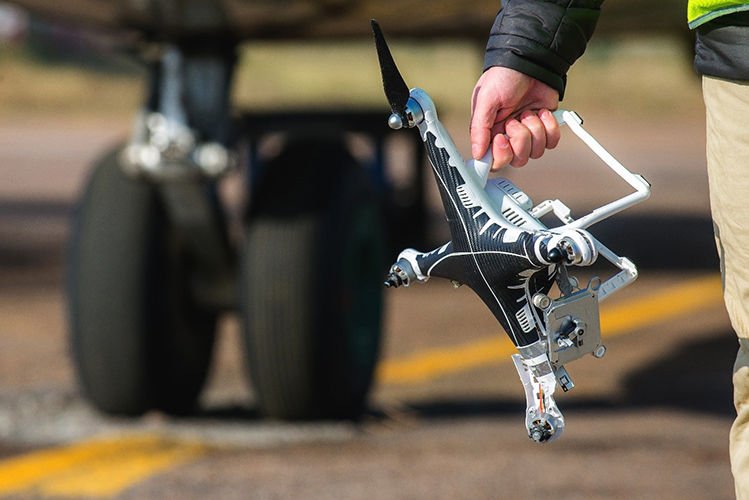In 2020, the SESAR Joint Undertaking unveiled a new wave of research into technologies aimed at making aviation smarter and more sustainable for the generations to come. Among them are digital solutions specifically addressing the airport environment and key performance areas around climate mitigation, safety and connectivity with other modes of transport.
The green promise of aircraft taxiing technologies
Every saving counts when it comes to reducing fuel burn, CO2, but also local air pollutant emissions and noise. That’s where taxibots or e-taxi systems come in and the Advanced Engine Off Navigation (AEON) project. The project partners aim to significantly lower CO2 emissions generated by aircraft taxiing at airports by developing a concept of operations for engine-off taxiing techniques, making use of novel technologies that are coming onto the market. These include non-autonomous taxiing systems like taxibots which, unlike the normal pushback trucks, can tow full aircraft to near the start of the runway, without the aircraft having to start its engines. Autonomous taxiing systems also offer big fuel and emission savings and end last minute delays, relying as they do on electric motors embedded in the landing gear to allow planes to push back and taxi without their jet engines running.
The project will work closely with airports, airlines and manufacturers on developing a business model to help airports and/or airlines evaluate their benefits in implementing these technologies; as well as a real-time evaluation of environmental indicators to support dynamic decision-making. The work of the project will support the future implementation of these innovative taxiing solutions, which are expected in some cases to reduce taxi fuel costs by around 50% and up to 85% of ground operations costs.
Protecting airports from drone incursions

Partners in the ASPRID (Airport System PRotection from Intruding Drones) project aim to develop a service-oriented operational concept and system architecture to protect airport operations from unwanted drones.
Drone intrusions at airports regularly hit the headlines and airports are taking measures in the short term to mitigate these, from grounding aircraft when drones are detected to reducing speed of aircraft on approach in order to limit damage in the event of a collision. Drones can therefore have significant impact on airport operations. Research and development is underway on a broad range of systems that are able to impede such so-called rogue-drone flights over non-authorised areas by detecting and neutralising drones. While innovative, these solutions are not necessarily interoperable or customised with airport environments in mind.
Partners in the ASPRID (Airport System PRotection from Intruding Drones) project aim to develop a service-oriented operational concept and system architecture to protect airport operations from unwanted drones. To do so, the project will analyse aircraft and airport (runway and ground) operations to pinpoint possible vulnerabilities. With this, the project aims to identify possible technologies, procedures and regulations that could help better safeguard against drone incursions and/or can help them recover from any disruptions as quickly and as efficiently as possible. In doing so, the project proposes a more integrated and coordinated approach to handling drone incursions.
https://www.sesarju.eu/projects/ASPRID
Airports, a key node in Europe’s future multimodal transport
Planes, trains and automobiles, not to mention micro-mobility options like bikes and scooters. Would-be travellers have never had so many mobility options to choose from for getting from A to B. But how can these be seamlessly combined so that passengers can travel from door-to-door free of hassles and conscious that they have selected the greenest combination?
The IMHOTEP (Integrated Multimodal Airport Operations for Efficient Passenger Flow Management) project has a vision and a plan to make this a reality – and airports will be one of the key multimodal connection nodes. A set of interconnected platforms and services will enable common situational awareness and real-time coordinated decision-making between airports and ground transport modes, allowing a more efficient passenger flow management and providing travellers with accurate information and recommendations for the planning and reconfiguration of their journeys in real time.
The project partners will test out their methods and tools using Palma de Mallorca and London City airports as case studies – this work will be done in direct collaboration with airports, local transport authorities and transport operators, in order to demonstrate the maturity of the technology.







